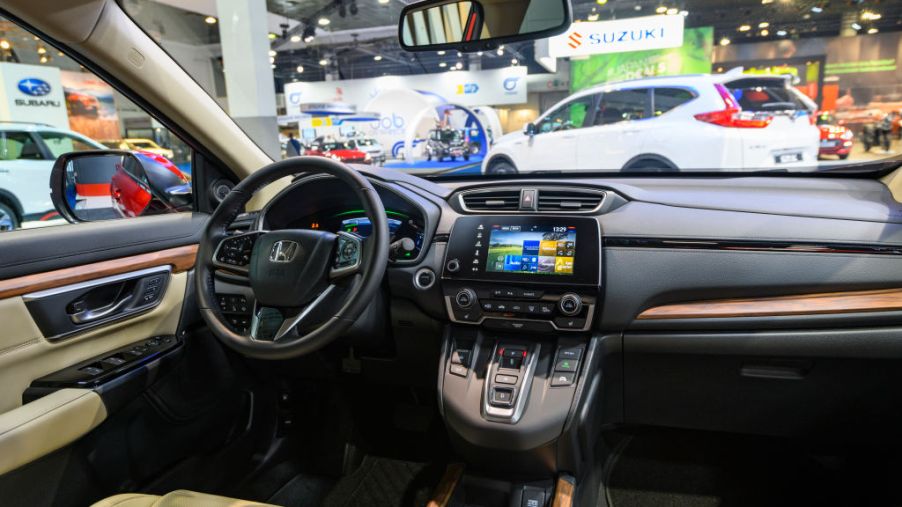
6 Car Interior Materials Besides Leather and Fabric
When choosing what car to buy, consumers have a lot of options. They may be looking for the car with the most powerful engine or the most standard features. Another important thing to consider is the car’s interior. It’s not just for aesthetics: if the seats aren’t comfortable, you probably won’t be enjoying your drive.
The most common interior materials are cloth fabric and leather. Fabric, usually nylon, is usually found in the base trim. Higher trims, or standard luxury vehicles, typically have leather seating. However, automakers have been introducing more material options over the years. If you’re not a fan of conventional leather or fabric, here are your options.
Vinyl
This material is now a popular interior choice thanks to its high-quality look and feel. It’s also very cheap, making it a cost-effective option for manufacturers. Faux vinyl, which is more fine-tuned to emulate leather, is even less expensive.
Vinyl is easy to clean and is very comfortable. However, it’s not as durable as other materials. Vinyl seats can also get very hot during the summer months, which can lead to cracking. You can find vinyl seats in work trucks like the Ford F-150 or the GMC Sierra 1500.
Wood
Many luxury cars feature genuine or imitation wood-grain accents as part of their interiors. It’s commonly used to decorate steering wheels, dashboards, and door panels. The Woody Wagon, an iconic American car of the ’70s, even featured faux wood-grain wrapped around each side.
The walnut trim used in a Rolls Royce and the Porsche’s mahogany definitely enhance both cars’ luxury feel. However, it can raise the price by at least $2,000. If you want to make your car a little more stylish without breaking the bank, many manufacturers offer artificial wood wraps.
Faux leather
Just like the real thing, faux leather is easy to clean and gives the car a classy feel. Faux leather is also a good option for those who want to avoid using animal products. It’s commonly offered in luxury cars like the Tesla Model X or the Mercedes-Benz C-Class.
Some less expensive vehicles, like the Toyota Prius, also offer faux leather as an option. It’s a cheaper upgrade than genuine leather, but some argue that it doesn’t feel the same. Faux leather also generally doesn’t last as long as real leather.
Suede
Suede is soft to the touch and has a thin, cloth-like appearance. Like leather, it’s made from animal hides. You can find this material in a wide range of cars, including the Dodge Charger and Jeep Grand Cherokee.
This material is a good choice because it’s very soft and can last for many years with proper care. However, it collects dirt more easily than leather, so it has to be cleaned more often.
Velour
This material was more common in older cars like the Buick Roadmaster and Oldsmobile Cutlass. Velour is a very comfortable plush material made from polyester and cotton. Today, it’s still used in many seat covers.
It was likely discontinued because it is known to trap heat, making long car trips unbearable in the summer. It’s also hard to clean because dirt tends to stick to the fabric.
Wool
This material was commonly offered as a luxury option in cars from a few decades ago. It’s not as common anymore, but it seems to be making a comeback. You can currently find wool seats in a Range Rover Velar or Toyota Century (if you live as a Japanese royal).
Wool can be very comfortable, but it’s also known to get hot during warm days. It may also not be the best choice for those with allergies because it retains odors easily.



